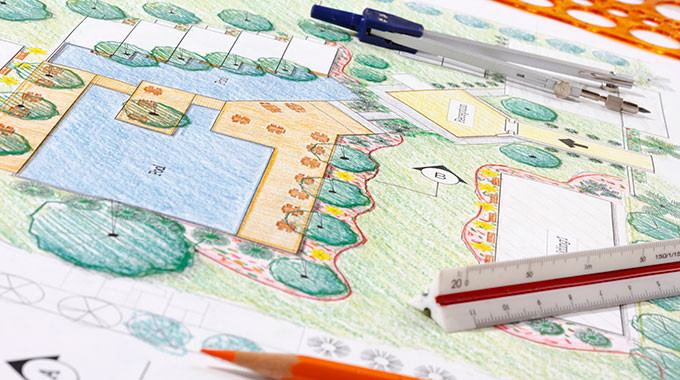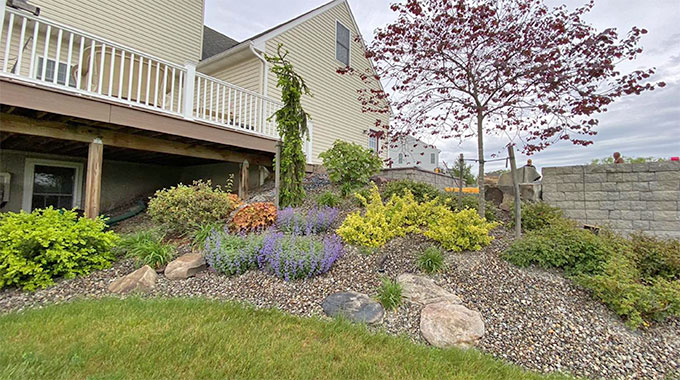Planting Today – Planning for the Future
March 11, 2024Planting Today – Planning for the Future
Plants grow, and that’s a good thing! One unique challenge when designing and installing new landscape plantings for your property is to design not just for right now but for years down the road as well. Overgrown landscapes are unsightly, and we often see properties where previous plantings were installed to fill in the space immediately, rather than providing appropriate space for the landscape to fill in naturally over time. With a combination of horticultural knowledge, planning, and ongoing maintenance, your landscape can mature gracefully into its space.

Accounting for Growth Rates
Any new planting plan needs to account for the fact that landscape plants grow at drastically varying rates. Ornamental trees and shrubs may take several years to achieve a mature size, while perennial flowers will often explode once they gain a foothold in your landscape. A key part of landscape design is recognizing differing rates of growth and choosing specimens that will complement each other as they grow.
Designing with Maintenance in Mind
Pruning is a key facet of landscape maintenance, and it’s crucial in keeping a landscape from becoming overgrown. It’s not unusual, though, to see a landscape that is planted too densely to encourage ongoing landscape care. A well-planned landscape design takes this into consideration and allows for easy access to prune and maintain the landscape.

Proper Planting Requires Patience
It’s not unusual for brand-new landscape plantings to feel a bit diminutive right out of the gate. This is normal, because each of those specimens has a true size and shape to achieve. In the meantime, the space between new plantings provides the air, water and sunlight that they need to reach their potential. Planting for mature size requires a bit of patience at the beginning, and it pays off beautifully in the long run.